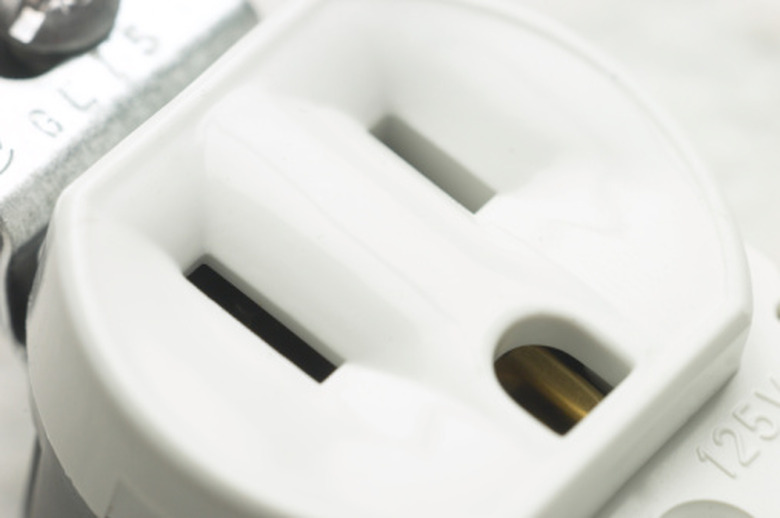Why Do Some Electrical Plugs Have Polarity?
Electrical plugs and outlets are not universal. Around the world, many different techniques and designs are used. Even within the United States, there are several different designs, some more common than others. When it comes to polarized plugs, there is a specific design for them that provides particular benefits and safety to the equipment and user.
Identification
Polarized plugs are designed to be used in only one orientation, meaning that each blade of the plug is supposed to be inserted into a specific hole in the outlet. On a standard American power plug, which is ungrounded and two pronged, identifying whether the plug is polarized is simple. If one of the blades on the plug is slightly wider than the other, the plug is polarized. The slightly wider blade will not fit into the incorrect hole, preventing the plug from being inserted incorrectly. A grounded three-pronged American plug is always polarized due to the third grounding blade, which makes it clear which orientation the plug is supposed to be in. Other countries use different methods for their polarized plugs, but all the techniques are designed to allow the plug to be inserted only in the correct orientation.
- Electrical plugs and outlets are not universal.
- Other countries use different methods for their polarized plugs, but all the techniques are designed to allow the plug to be inserted only in the correct orientation.
Purpose
Polarized outlets and plugs are used primarily as a safety feature to help prevent the danger of electrical shock. On a polarized plug, the smaller of the two blades is the hot wire and the larger is the neutral. The electricity enters the appliance through the hot wire and exits again through the neutral. A device that uses a polarized plug knows which blade will be connecting to the hot wire, thus controlling in what direction the power will flow through the device. Polarized plugs are most often seen on devices that use an on-off switch. On such a device, if the plug were non-polarized, electrical components would likely retain an electrical charge even if switched off, producing a severe risk of electrical shock. For devices that have exposed elements, such as a toaster, this would be especially dangerous.
- Polarized outlets and plugs are used primarily as a safety feature to help prevent the danger of electrical shock.
- On such a device, if the plug were non-polarized, electrical components would likely retain an electrical charge even if switched off, producing a severe risk of electrical shock.
Non-Polarized
A device with a non-polarized plug is designed to be able to accept the hot wire from either of its two blades. Devices using a non-polarized plug generally have other types of measures preventing electrical shock when turned off, though this is not always the case, especially in older appliances. AC adapters can use non-polarized plugs safely because they are completely enclosed in plastic casings and carry virtually no risk of electrical shock regardless of the plug's orientation.
Warning
If a plug is polarized, you must plug it into the receptacle in the correct orientation. The design of the plug is a safety feature. If the blade is trimmed down or the plug is somehow forced in the outlet, the device will develop a severe risk of electrical shock even when switched off. Never force a plug into an outlet or make modifications to an electrical plug.
- A device with a non-polarized plug is designed to be able to accept the hot wire from either of its two blades.
- If the blade is trimmed down or the plug is somehow forced in the outlet, the device will develop a severe risk of electrical shock even when switched off.
